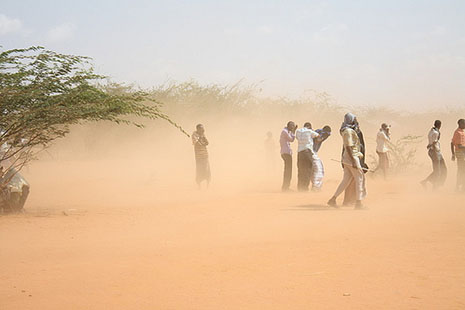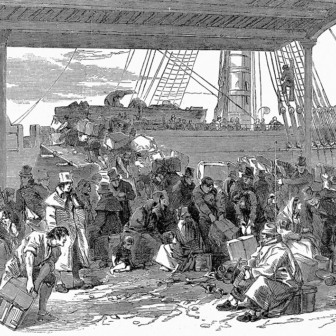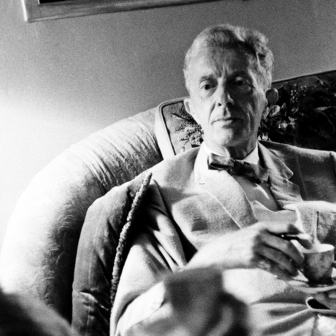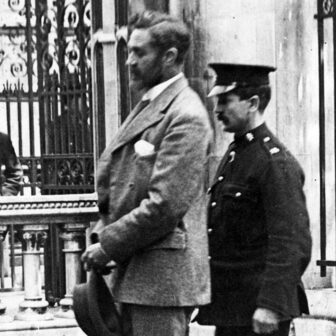AS TRADITIONALLY semi-nomadic herders in a frequently arid environment, depending for survival essentially on the dairy produce of their camels, cattle, sheep and goats, most Somalis are no strangers to drought and famine. These severe conditions occur regularly – the last major drought was in April 2006 – and even within the same twelve months, quickly leading to starvation and death among livestock and the pastoralists themselves. Sheep, goats and cattle, which require the most regular watering, are the first to succumb; camels survive longest and range furthest in the quest for grazing.
The basic herding groups are organised along similar lines. With a flock of sheep and goats, some cattle, and a few burden camels to carry tents and other effects, the women and children move through areas where water and grass are available, setting up camp for weeks or months according to local conditions. Usually, these families camp with other families related to their husbands – the encampment is surrounded by a protecting fence made of brushwood – in a social unit known as a reer (the generic term for group). Unloading their possessions from the often surly burden camels, and erecting a family tent made out of woven mats, plastic bags and sheets, and other material, draped over a springy framework of branches, is usually the work of the women who, with their young children, also look after the sheep and goats.
Men are closely identified with the grazing camels, which they herd in pastures, frequently several days’ march from where their families are tending the flocks of smaller animals. In modern tribal warfare the iconic power of camels can sometimes be seen when automatic weapons are awkwardly mounted on their backs; it must be difficult to control this haughty beast while making effective use of this new style of weaponry. Camels, however, are not normally ridden. Their watering is a major task requiring extended teamwork at the deep “home wells” owned communally by a clan or sub-clan and often located several days away from the pastures where they are grazing. The laborious task of camel watering is made more difficult and taxing by the need to routinely dig out and clean the well and maintain its flow of water.
In this dry environment, water is key. But, unlike the famous “Oriental civilisations” in the Middle East based on control of water, this does not give rise to a pattern of water management associated with political hierarchy. When they are not out herding the camels, especially nowadays, men tend to gather in nearby trading settlements, which form another focus of their shifting activities and include local politics as well as commerce and socialisation.
This is a profoundly decentralised society. Traditionally, there are no stable, hierarchical political units and no chiefs wielding centralised power in the familiar European pattern. In fact, the contrast between Somali society and the pattern of authority in more typically centralised African tribes struck colonial administrators forcibly, and this Somali peculiarity was quickly seen as a defining feature. In an often-quoted ethnocentric comment, an African sergeant-major in the British colonial forces is reported to have proclaimed that Somalis were “no good” because “they don’t have chiefs!”
As the colonisers gradually appreciated, however, patrilineal descent functions as the basic principle of Somali socio-political organisation. Long genealogies trace the individual’s descent, and represent his or her collective identity; common ancestors represent points of unity and cohesion. Typically, the genealogical principle determines degrees of collaboration between individuals and groups. Closeness in blood presumes common alliance: so Somalis speak of the “number of generations they count apart” as determining their solidarity or lack of it. Marriage, which usually takes place outside close-knit descent, provides an ancillary tie of significance both in its own right and as the source of the maternal links that are considered next in importance.
Government is bottom-up in the essentially democratic Somali world. Authority radiates upwards from decisions taken collectively by the “elders” of the smallest Somali social units and their delegations to larger meetings. With social solidarity (or political cohesion) built up by the coalition of smaller constituent units in this “segmentary” system, the larger groups – up to the clan level – are mobilised according to the closeness of their kinship ties and the mutual hostility which is assumed to divide those who are distantly related or unrelated.
The result is a very flexible political system, well adapted to Somali nomadic life. But the flexibility comes at the price of stability and durability, and undermines the ability to confront well-armed centralised power. This is tragically illustrated in the current conflict between the weakly organised Somali herdsmen and the tightly controlled Islamic fundamentalists, Al-Shabab, who, with their superior fire-power and ruthless brutality, especially towards women, have invaded much of the former state of Somalia to impose their despotic rule. Somalis have been outraged by the Islamists’ savage reaction to traditional Somali Sufism (Islamic mysticism), including their desecration of the graves of local ancestors venerated as saints. Somalis are primarily Sunnis of the Shafi’i legal school, and belong either to the Qadariya or Ahmadiya Sufi tariqas, whose founders they similarly regard as saints.
The anti-Sufi fundamentalist Al-Shabab, which includes a mixture of Somalis and non-Somali Arab Mujahidin, treats the resident Somalis virtually as its property, seeking to impose its strict, primitive beliefs and making full use of the financial and military power provided by its Saudi patrons. In the context of the present famine, Al-Shabab has gone so far as to prevent foreign aid agencies from entering Somalia or even negotiating with Somali elders, thus seeking to control the aid resources available to the stricken local population. This, of course, exacerbates the uneasy relationship between Somalis and their increasingly unwelcome “guests.”
This tense situation further highlights the complex political status of Somalia as a state. Although it is treated as an independent, self-governing entity whose “transitional federal government,” or TFG, is recognised (with varying degrees of conviction) by the European Union, the United Nations, Britain and the United States, it is not able to protect its own people or even negotiate effectively on their behalf. Over the years since recognition was rashly granted, it has become increasingly obvious that the TFG is not a functional government (except insofar as it acts as a channel for aid to its own members), controls neither its country nor its people and, indeed, provides no functional services. In short, it is not and never has been a government in any meaningful sense of the term.
This is worse than colonial rule. International recognition for the TFG, which has no genuine popular electoral mandate, or indeed any means of reflecting public opinion, has given all sorts of dubious characters access to foreign aid. It has also confused outside observers about the real status of this essentially ineffective and unelected body. The truth is that since the overthrow in 1990 of the regime led by the dictator General Mohamed Siyad Barre, Somalia has been without a functioning government. In the intervening period, although there has been intense and local Somali “peace-making” activity, at immense expense, no effective national government enjoying actual public support has yet been established.
As a result, and without help from their purely nominal government, Somalia’s inhabitants are desperately seeking famine relief wherever they can find it, often by trekking for hundreds of miles to the nearest refugee camps in neighbouring Kenya (where tens of thousands more have recently fled as refugees) or to the Somaliland Republic. These and other displacements seem to have reduced Somalia’s population to well under an estimated nine million (a figure that takes no account of famine deaths).
ORIGINALLY a British protectorate, Somaliland joined with the formerly Italian-controlled Somalia after independence in 1960 but reasserted its own sovereignty after the collapse of Barre’s government in 1990. Although it has lacked recognition, Somaliland has become a lively de facto independent state playing an increasingly significant role in the Horn of Africa. (It has just been invited to send a ministerial delegation to China, for example.) Perhaps its main local significance lies in its geographical position, enabling it to control Ethiopia’s major exports through its port of Berbera. The country covers an area of over 176,000 square kilometres and has an estimated population of some 3.5 million. It has a bicameral parliament that enables it to incorporate elected members as well as traditional leaders.
This hybrid voting system gives its political structure greater flexibility and endurance than Somalia’s Eurocentric organisation, which makes no such concessions to local political realities (and in any case no longer functions). It was established by the inter-clan peace-making process that established the contemporary Somaliland state. To develop a similar constitutional structure in Somalia would, I think, be very difficult, if not impossible, now: it would require a too-radical revision. Moreover, the Somalian elite tends to look down at the Somalilanders and would not readily take up examples from that quarter.
Since its formation, the Somaliland state has successfully held two national elections, with the participation of three national parties and supervised by observers. The current president, a seasoned Somali politician, was elected in June 2011. Among the members of the previous government was foreign minister Dr Edna Adan, the ly renowned founder of the women’s hospital that bears her name in the capital Hargeisa. The present government includes other female politicians, notably the education minister. Having recently successfully liberated a pirate-seized ship, Somaliland has also demonstrated that it is the only state on the Red Sea coast with the resources to respond to the pressing problem posed by piracy along its shores.
Somaliland is not the only new Somali state in the Horn region. Somalia has also spawned the new state of Puntland, based on Somalia’s north-eastern provinces, to the east of Somaliland. Although it had its own government which did not defer to Mogadishu – still nominally capital of Somalia – Puntland did not initially claim independence from Somalia. The name Puntland came from the ancient Egyptian “Land of Punt,” an important source of myrrh and frankincense and other rare fragrant spices prized from ancient times. But the precise location of Punt is disputed and it is not certain that it was indeed based in contemporary Puntland. Significantly, Puntland’s main clan groups (which belong to the Darod confederation) have direct kinship links with clans in southern Somalia around the important port of Kismayu.
A handful of other regions in central and southern Somalia have also set up organisations claiming separate identity. Of these, the earliest and most promising was probably that based in the Bay and Bakool regions in the southern province of Baidoa (where a local university was reported to be under construction), reflecting the political aspirations of the local Rahanweyn people who speak a language known as Maymay, which is distinct from standard Somali. This, in fact, is the biggest cultural division within the Somali region and includes ethnic groups of Bantu origin who cultivate irrigated farms along the Shabelle and Juba rivers. Other related marginal groups traditionally live by sea fishing.
The centre of the famine today is mainly in south-central Somalia, where there are terrible scenes of starvation and death. Somaliland and Puntland do not appear to have been directly affected on any significant scale, although southern Somali refugees have sought and found relief in Somaliland without necessarily having traditional kinship ties there. As noted, the response to the famine has been seriously undermined by the hostility of Al-Shabab to Western aid agencies and the ineffectiveness of the TFG. Thus today, outside Somaliland, there is not much to celebrate. But at least, wherever they live, Somalis cherish their impressive oral poetry, which since the universal adoption of their alphabet is now a national literature accessible to appreciation.
It is worth recording that radio and telephonic communication have also greatly facilitated credit operations that enable the very large Somali refugee population dispersed around the world to sustain their kinsmen at home through a very efficient system of remittances. In the absence of banking and government (except in Somaliland), the hawala (trust) credit system can be used to dispatch funds rapidly anywhere in the world without banks, making money available by telephone using all sorts of receivers, including mobile phones. It is not at all unusual to see a nomad standing in the desert negotiating his finances. In 2006, the flow of money by this channel was estimated at between US$750 million and US$1 billion annually. Very appropriately, the main company involved is Somali-owned. •




